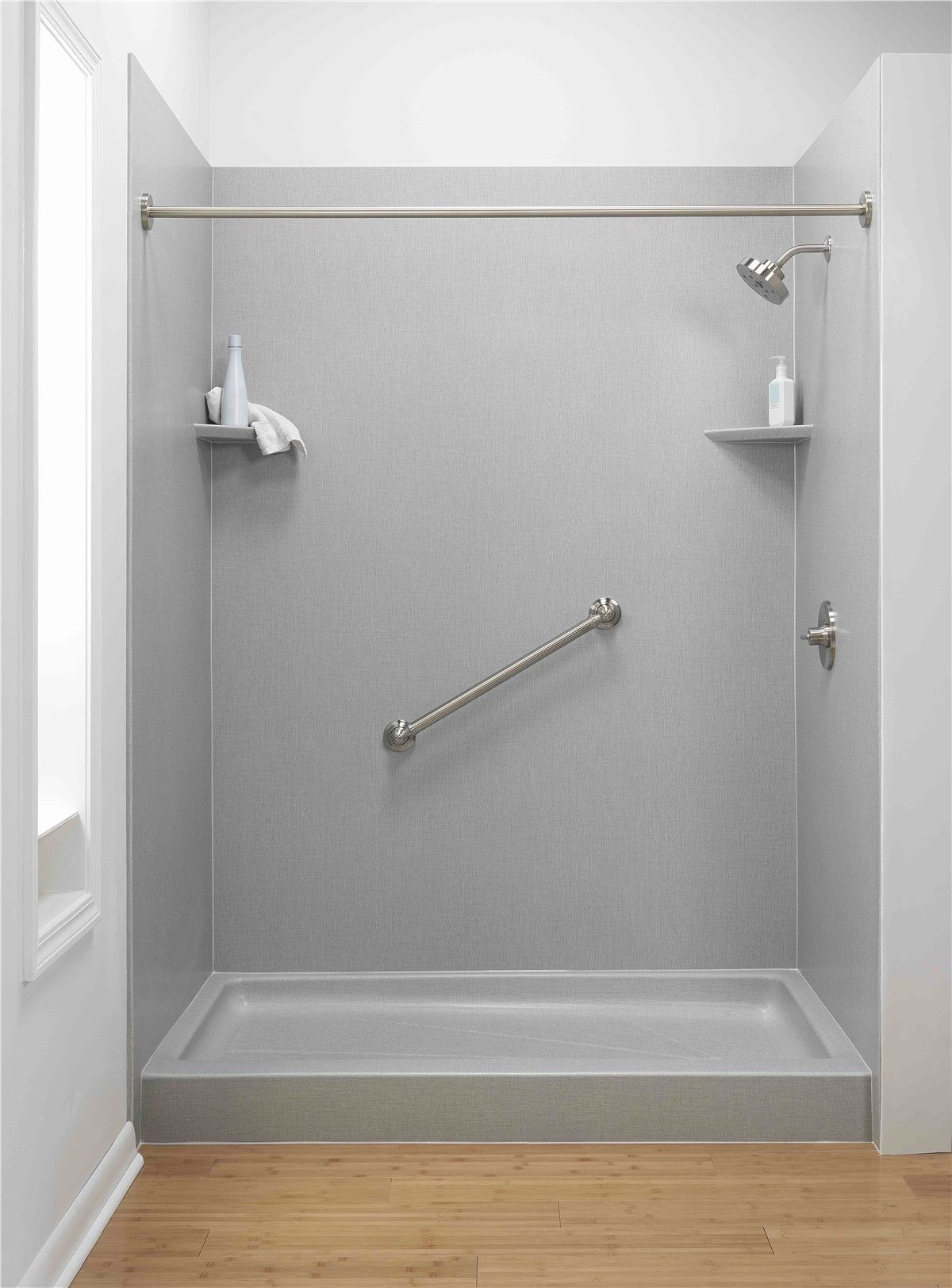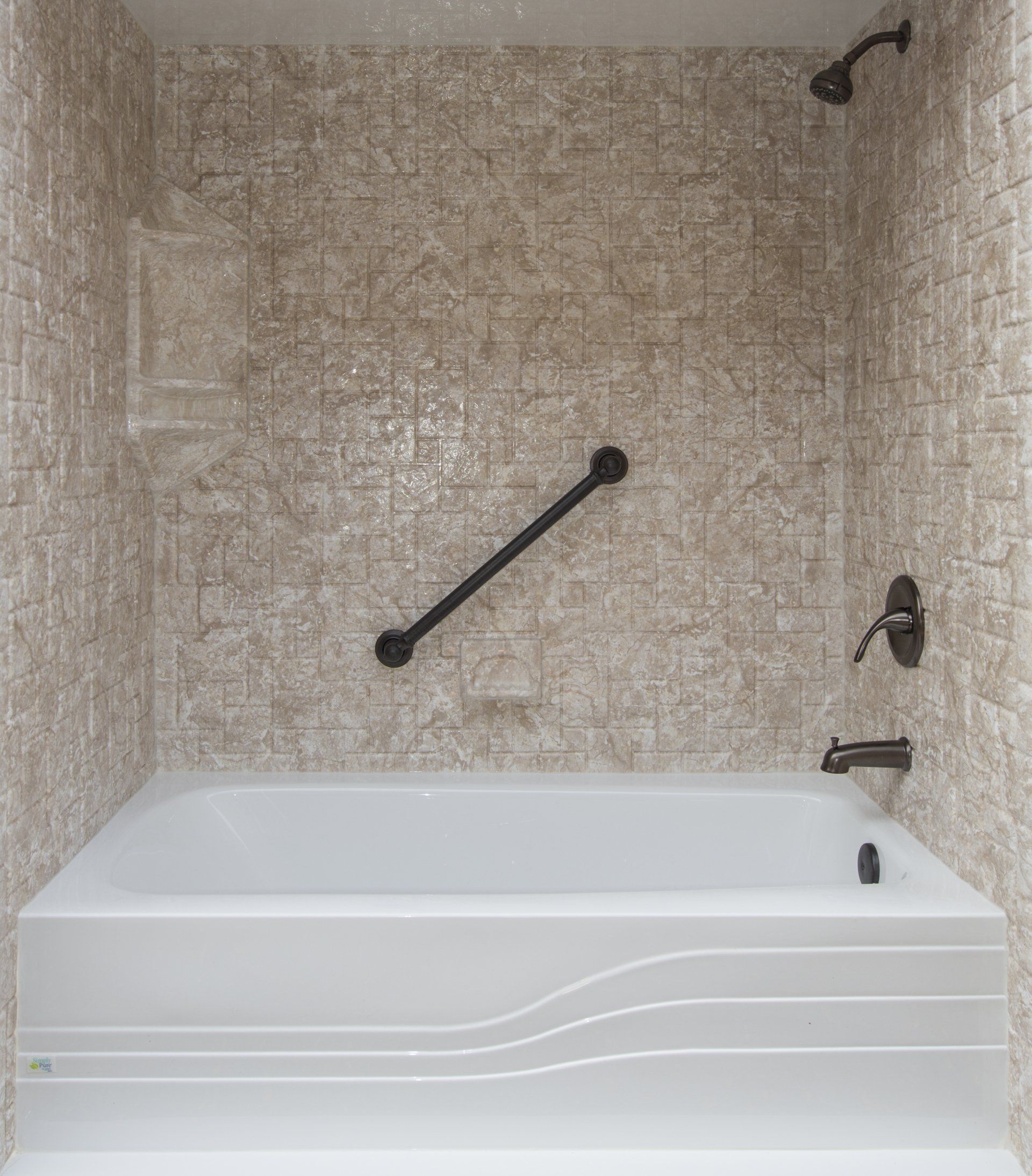Maximizing Bathroom Space with a Bathtub-to-Shower Conversion
Converting a bathtub to a shower is an effective way to increase usable space in small bathrooms. This change can make a bathroom feel larger and more open without requiring a costly expansion. In homes where bathroom size is often limited, tub-to-shower conversions offer a practical solution to improve comfort and convenience. By replacing bulky tubs with sleek, space-saving showers, homeowners can reclaim valuable floor area. This extra space can be used for storage, easier movement, or enhanced design elements.
Besides space gains, showers can improve accessibility and safety, especially for older adults or those with mobility challenges. With a variety of shower designs and finishes, it’s possible to update a bathroom’s look while adding real functionality.
At
Cloud 9 Tubs LLC, we provide professional
bathtub-to-shower conversions in Rochester, NH. We focus on durable materials, local expertise, and a clean installation process tailored to each home. Whether you’re upgrading for style, space, or safety, we offer solutions built around your needs.
Understanding Bathtub-to-Shower Conversion
A bathtub-to-shower conversion involves removing a bathtub and installing a shower in its place. This change usually includes adding a shower base, wall surrounds, and new fixtures. The process transforms the space to suit the homeowner’s needs better while using the existing plumbing setup.
This conversion is popular in smaller bathrooms where a tub takes up significant floor space. It allows for a more open layout and easier access. Understanding this process helps homeowners plan effectively and set realistic expectations for the project timeline and budget.
Common Reasons for Choosing a Tub-to-Shower Conversion
Homeowners often convert a bathtub to a shower to save space, improve safety, and update bathroom style. For example, families with young children may prefer a tub, but older adults often find showers easier and safer to use.
Many residents in Rochester, NH, seek this change to make small bathrooms more functional. Walk-in showers reduce the risk of slips, which is important for elderly users or those with mobility concerns.
Showers also use less water on average, which can lower utility bills. An average American shower uses about
17.2 gallons of water per use, while baths can use up to 36 gallons.
At Cloud 9 Tubs, our team combines practical layouts with durable materials to help clients get more from their bathroom space.
Space Benefits of Tub-to-Shower Conversions
How a Shower Creates More Usable Floor Space
Replacing a bathtub with a shower frees up valuable floor space, which is helpful in small bathrooms. Bathtubs require a large, fixed space, often around 60 inches long and 30 inches wide. In contrast, showers can be installed in smaller areas, sometimes as compact as 32 inches by 32 inches.
This difference allows homeowners to reclaim space that was previously taken up by the tub. The newly available floor area can be used for practical upgrades such as adding shelving and cabinets or even just allowing for easier movement within the bathroom.
By choosing to convert a bathtub to a shower, you can make these spaces more comfortable and functional without expanding the room itself.
Visual Impact: Making Small Bathrooms Appear Larger
Showers, especially those with clear glass doors or enclosures, help small bathrooms feel more open and inviting. Unlike a bathtub with a solid wall or a shower curtain that blocks sightlines, glass enclosures let light flow freely through the space.
For example, a frameless glass shower door removes visual barriers, allowing the eye to travel across the entire room. This uninterrupted view creates an illusion of a bigger bathroom. Pairing this with light-colored tiles or reflective surfaces further enhances brightness, which naturally makes the space feel larger.
This approach combines well with the actual floor space saved by removing the tub, resulting in a bathroom that feels both open and spacious despite its small footprint.

Practical Benefits of Open Floor Plans in Bathrooms
Removing a bathtub opens up the layout, making the bathroom easier to navigate and use. This is beneficial for people with limited mobility or seniors who may struggle with stepping over a high tub edge. A walk-in shower eliminates this obstacle, improving safety.
With the extra space, homeowners can add useful features such as built-in shelves for toiletries, seating benches, or grab bars. These additions improve daily comfort and make the bathroom more accessible for all users.
The link between increased usable floor space and improved visual openness helps create bathrooms that feel both functional and comfortable. This makes tub-to-shower conversions an excellent choice for anyone looking to maximize space and usability in small bathrooms.
Accessibility and Safety Advantages
Walk-In Showers for Easier Access
Walk-in showers provide simpler, safer access compared to traditional bathtubs. Unlike tubs that require stepping over a high edge, walk-in showers have low or no thresholds, making entry easier for all users, including children and people with mobility challenges.
A zero-threshold shower reduces barriers and allows smooth movement, which is especially helpful in small bathrooms where space is limited. This feature can be a deciding factor for homeowners looking to improve daily convenience and bathroom usability.
Reducing the Risk of Slips and Falls
Choosing to convert a bathtub to a shower lowers the risk of accidents caused by slipping or tripping. Bathtubs often have slippery surfaces and high walls to step over, which can increase the chance of falls. Showers with slip-resistant flooring, built-in benches, and grab bars offer safer bathing options. According to the CDC, falls are a leading cause of injury for people over 65, so safety improvements in bathrooms are essential for families planning long-term living arrangements.
Design Strategies for Small Bathrooms
Choosing Shower Types That Save Space
Selecting the right shower type is key to maximizing space in small bathrooms. Options like walk-in showers and neo-angle showers use less floor area than traditional tubs. In Rochester, NH, homes with limited bathroom space, these choices can avoid a cramped feel while maintaining functionality.
Barrier-Free and Low-Threshold Showers
Barrier-free and low-threshold showers improve accessibility while saving space. These designs eliminate high edges, making showers easier to enter without adding bulk. A barrier-free shower can blend seamlessly into the floor, making the bathroom appear more open. This style also complements built-in storage or compact fixtures, keeping the space practical and user-friendly.
Corner Showers and Compact Enclosures
Corner showers and compact enclosures maximize unused space in tight bathrooms. By placing the shower in a corner, homeowners free up central floor space, which helps the bathroom feel less crowded. These enclosures come in various shapes and sizes, allowing customization to fit unique layouts common in smaller homes.
Incorporating Built-In Storage
Built-in storage solutions keep small bathrooms organized without taking up extra space. Niches within shower walls, recessed shelves, and integrated benches provide convenient places for toiletries and towels. This approach reduces clutter on counters and floors, enhancing both the bathroom’s appearance and usability.
Selecting Fixtures to Maximize Room
Choosing compact and wall-mounted fixtures opens up floor space in small bathrooms. Slim sinks, floating vanities, and narrow faucets keep essential functions while minimizing bulk. Combined with space-saving showers, these fixtures improve flow and contribute to a less congested environment. Careful selection of fixtures connects with storage and shower design choices, creating a cohesive layout ideal for small bathroom upgrades in Rochester, NH.
Cloud 9 Tubs: Professional Tub-to-Shower Conversion Services in Rochester, NH
What to Expect During Installation
Cloud 9 Tubs completes most bathtub-to-shower conversions in a single day, providing a streamlined and efficient experience for homeowners. The process begins with a complimentary in-home estimate, where a specialist evaluates the existing layout and discusses design preferences. On the scheduled installation day, our team removes the old bathtub or shower, handles disposal, and prepares the area for the new system.
Installation includes all necessary plumbing modifications, waterproofing, and secure fitting of the new shower. Throughout the project, we maintain clear communication, ensuring minimal disruption and a high standard of workmanship.
Materials and Techniques for Durability and Style
Cloud 9 Tubs installs premium acrylic shower systems known for their durability, low maintenance, and clean appearance. Acrylic is non-porous, resistant to mold and mildew, and designed to withstand daily use without staining or cracking. It offers a smooth, modern finish that fits a variety of bathroom styles.
We use seamless wall panels and low-threshold shower bases to create watertight installations that are both functional and visually appealing. These methods prevent leaks, reduce long-term maintenance, and provide a clean, updated look.

Working with Local Experts
Choosing Cloud 9 Tubs to convert a bathtub to a shower in Rochester, NH, means working with professionals familiar with local building codes and permit requirements. We make sure the conversion meets all safety standards and runs smoothly from start to finish.
With established relationships across the region, we source quality materials quickly and respond promptly to service needs. This local expertise allows us to deliver reliable results, providing homeowners with confidence and long-term value.
Post-Installation Support and Lifetime Warranty
Cloud 9 Tubs offers ongoing post-installation support, backed by a lifetime warranty on many of their products and services. After completing the tub-to-shower conversion, we provide maintenance tips to homeowners to keep their new shower in top condition. If any issues occur, we respond quickly to provide repairs or adjustments. This commitment to long-term support sets us apart and adds lasting value to your investment.
Clear Communication Throughout the Project
Clear communication is a key part of Cloud 9 Tubs’ service, ensuring homeowners stay informed from start to finish. Customers work directly with our owner, not a salesperson, ensuring clear, honest communication.
Every in-home consultation is handled personally, allowing for accurate assessments and direct answers to any questions. Homeowners are kept informed throughout the project with updates on scheduling, progress, and any adjustments. With this one-on-one approach, we ensure a smooth, stress-free experience.
Conclusion
Converting a bathtub to a shower is a practical way to create more space, improve accessibility, and add value to your home. For homeowners in Rochester, NH, this type of upgrade also means working with a team that understands local needs and building requirements.
Cloud 9 Tubs delivers efficient, reliable, and customized tub-to-shower conversions that prioritize both function and design. With skilled installers, quality materials, and responsive support, we make the process smooth from planning to completion. Our experience with small spaces and local conditions makes us a trusted choice for homeowners looking to get the most from their bathroom renovation.
Cloud 9 Tubs is here to help you with reliable, high-quality
tub-to-shower conversions. Whether you're ready to begin or just gathering information, our team in Rochester, NH, is available to answer your questions. Call us at
(603) 401-9530 or email
info@cloud9tubs.com to get started.
Blog






